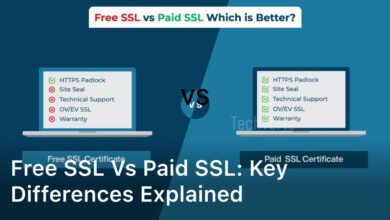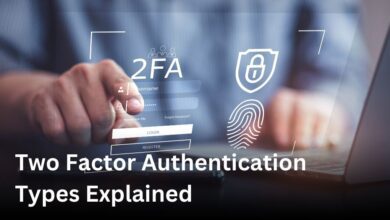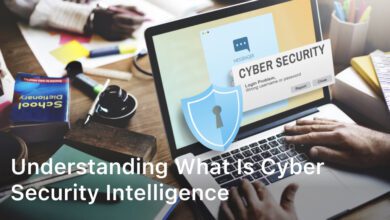Welcome to our comprehensive guide on two factor authentication (2FA)!
In this article, we will provide a detailed explanation of what two factor authentication is and how it works.
With the increasing prevalence of cyber threats, it is crucial to understand this essential security measure that can protect your online accounts and sensitive information.
Two factor authentication, also known as 2FA, adds an extra layer of security to your online accounts by requiring two different factors to verify your identity.
It goes beyond the traditional username and password combination, making it significantly harder for unauthorized individuals to gain access to your accounts.
By utilizing two factor authentication, you are not solely relying on something you know (like a password) to secure your accounts.
Instead, you combine it with something you have or something you are, such as a verification code sent to your mobile device or a fingerprint scan.
In the following sections, we will explore the importance of two factor authentication, the different methods available, the step-by-step process involved, and the advantages it offers.
We will also provide best practices for implementing this security measure effectively.
So, let’s dive into the world of two factor authentication and enhance your online security!
The Importance of Two Factor Authentication

In today’s digital age, the security of online accounts has become a top concern for individuals and businesses alike.
Cyber threats are continuously evolving and hackers constantly seek new ways to gain unauthorized access to sensitive information.
This is where two factor authentication (2FA) comes into play, providing an extra layer of security to protect your online accounts and personal data.
When you enable 2FA on your accounts, it requires you to provide two different forms of verification before granting access.
This significantly enhances the security of your accounts because even if cybercriminals obtain your password, they would still need an additional verification, such as a fingerprint scan or a unique code sent to your mobile device, to gain access.
By implementing two factor authentication, you significantly reduce the risk of unauthorized access and potential data breaches.
It acts as a deterrent to hackers, making it much more difficult for them to compromise your accounts.
Thus, your sensitive information remains protected, giving you peace of mind and confidence in your online activities.
The Security Benefits of Two Factor Authentication
The security benefits of two factor authentication are undeniable. It provides an additional layer of protection against various cyber threats, including phishing attacks, password breaches and social engineering attempts.
- Prevention of Unauthorized Access: Two factor authentication ensures that only authorized individuals can access your accounts. Even if someone manages to obtain your password, they still require the second factor (such as a fingerprint or a one-time verification code) to gain access.
- Protection Against Phishing Attacks: Phishing attacks are a prevalent method used by hackers to trick users into revealing their login credentials. Two factor authentication adds an extra level of defense against phishing attempts by requiring a second form of verification, making it significantly more difficult for attackers to impersonate you.
- Enhanced Account Security: By implementing 2FA, you’re taking proactive measures to secure your online accounts. This not only protects your personal information but also safeguards any financial or sensitive data associated with those accounts.
The importance of two factor authentication cannot be overstated. It is one of the most effective ways to ensure the security of your online accounts in an increasingly interconnected world.
Methods of Two Factor Authentication
In today’s digital landscape, protecting our online accounts and sensitive information is more important than ever.
One effective method that organizations and individuals can implement to enhance security is two factor authentication (2FA).
This extra layer of protection requires users to verify their identity using two different factors, significantly reducing the risk of unauthorized access.
SMS Verification Codes
One commonly used method of 2FA involves the use of SMS verification codes.
When logging into an account, a unique code is sent to the user’s registered mobile number.
This code must be entered in addition to the regular username and password, ensuring that only the authorized user can gain access.
Email Verification
Another method is email verification, where a verification link or code is sent to the user’s registered email address.
By clicking the link or entering the code, the user confirms their identity and gains access to their account.
Email authentication provides a convenient and widely accessible option for implementing two factor authentication.
Physical Security Keys
Physical security keys are hardware devices that provide an additional layer of security.
They are typically in the form of a USB key or a smart card that users insert into their devices to authenticate their identity.
Physical security keys offer robust protection against phishing attacks and provide a highly secure method of two factor authentication.
Biometric Authentication
Biometric authentication methods, such as fingerprint or facial recognition, offer a convenient and secure way to implement two factor authentication.
Users can authenticate their identity using their unique biometric features, adding an extra layer of protection and ensuring that only authorized individuals can access their accounts.
Real-life examples of companies utilizing these two factor authentication methods include:
| Company | Two Factor Authentication Method |
|---|---|
| Physical security keys | |
| Biometric authentication | |
| Microsoft | Email verification |
| Amazon | SMS verification codes |
Implementing two factor authentication with various methods provides an added layer of security, making it significantly more difficult for attackers to gain unauthorized access to accounts.
It is recommended that individuals and organizations utilize two factor authentication to protect their online presence and safeguard valuable information.
The Two Factor Authentication Process
Setting up and using two factor authentication (2FA) involves a simple yet effective step-by-step process.
This process adds an extra layer of security to your online accounts and ensures that only authorized individuals can access your sensitive information.
Step 1: Enable Two Factor Authentication
The first step is to enable two factor authentication on your account. This can usually be done through your account settings or security settings. Look for the option to enable 2FA and follow the instructions provided.
Step 2: Choose Authentication Methods
Next, you will need to choose the authentication methods you want to use. There are various options available, such as receiving a verification code via SMS, using an authenticator app, or relying on biometric authentication.
Step 3: Set Up Authentication Methods
Once you have chosen your preferred authentication methods, you will need to set them up. For example, if you opt for SMS verification codes, you may need to provide your phone number and verify it. If you choose an authenticator app, you may need to download the app and link it to your account.
Step 4: Verify Your Identity
After setting up your authentication methods, the next step is to verify your identity. This typically involves a one-time verification process where you enter a verification code or use biometric data, such as a fingerprint or facial recognition, to confirm your identity.
Step 5: Complete Two Factor Authentication Setup
Once your identity is verified, you have successfully completed the two factor authentication setup process.
From now on, whenever you log in to your account, you will be prompted to provide the additional factor of authentication, ensuring that only authorized individuals can access your account.
The two factor authentication process works by combining two different factors to verify your identity.
Typically, these factors fall into three categories: knowledge (something you know), possession (something you have), and inherence (something you are).
By requiring two factors, such as a password (knowledge) and a verification code (possession), 2FA significantly enhances the security of your online accounts.
By implementing the two factor authentication process, you can rest assured that your online accounts are protected against unauthorized access and potential cyber threats.
Advantages of Two Factor Authentication
Implementing two factor authentication (2FA) provides numerous benefits that enhance the security of your online accounts and protect your sensitive information.
Let’s explore some of the key advantages:
- Prevents Unauthorized Access:Two factor authentication adds an extra layer of security by requiring users to provide two separate pieces of identification: something they know (such as a password) and something they have (such as a verification code from their smartphone). This significantly reduces the risk of unauthorized individuals gaining access to your accounts, even if they manage to obtain your password.
- Protection Against Phishing Attacks:Phishing attacks involve tricking individuals into revealing their login credentials by pretending to be a trusted entity. With two factor authentication, even if cybercriminals manage to obtain your password through a phishing attempt, they would still need access to your second factor, which is typically a physical device or authentication app. This greatly mitigates the risk of falling victim to phishing attacks.
- Enhanced Account Security:By enabling two factor authentication, you are taking proactive measures to protect your online accounts. This security feature acts as a powerful deterrent to potential hackers, as it increases the complexity of accessing your accounts. It provides you with peace of mind, knowing that your sensitive information is well-guarded.
While two factor authentication offers numerous advantages, it’s necessary to address its potential drawbacks or limitations.
In the next section, we will explore some of these considerations and provide recommendations for effectively implementing 2FA.
Best Practices for Implementing Two Factor Authentication
Implementing two factor authentication (2FA) is an essential step in safeguarding your online accounts and protecting sensitive information from unauthorized access.
To ensure the security and effectiveness of your 2FA implementation, follow these best practices:
- Choose Secure Authentication Methods: Select authentication methods that offer the highest level of security. Consider using options such as SMS verification codes, email verification, physical security keys, or biometric authentication, depending on the options available for your accounts.
- Regularly Update Authentication Settings: Stay proactive in maintaining the security of your accounts by regularly updating your 2FA settings. Enable automatic updates whenever possible to ensure you have the latest security features and fixes.
- Maintain a Backup of Recovery Options: It’s crucial to have a backup plan in case you lose access to your preferred authentication method. Set up backup codes or alternative contact methods, such as a secondary email address or phone number, to regain access to your accounts.
- Enable Device Recognition: Some 2FA systems offer device recognition features that remember trusted devices you use frequently. Enable this feature to streamline your authentication process while still maintaining a high level of security.
- Use Different Authentication Methods: If available, utilize multiple 2FA methods for added security. For example, you can combine SMS verification codes with biometric authentication to create a multi-layered authentication process.
- Enable Additional Security Measures: Take advantage of any additional security measures offered by the service or platform. This may include features like account activity notifications, allowing you to monitor and detect any suspicious login attempts.
By following these best practices, you can enhance the overall security of your online accounts and protect your sensitive information from unauthorized access.
| Best Practices for Implementing Two Factor Authentication |
|---|
| Choose Secure Authentication Methods |
| Regularly Update Authentication Settings |
| Maintain a Backup of Recovery Options |
| Enable Device Recognition |
| Use Different Authentication Methods |
| Enable Additional Security Measures |
Conclusion
Throughout this article, we have explored the concept of two factor authentication (2FA) and its significance in enhancing online security.
By requiring users to provide two different factors of authentication, such as a password and a verification code, 2FA adds an extra layer of protection against unauthorized access to your accounts.
The importance of two factor authentication cannot be overstated.
With the prevalence of cyber threats and data breaches, relying solely on passwords is no longer sufficient to safeguard sensitive information.
By implementing 2FA, you can significantly reduce the risk of unauthorized access and protect your personal and financial data from falling into the wrong hands.
The security provided by two factor authentication goes beyond simply validating your identity.
It also acts as a deterrent for potential attackers, as the additional step of verifying a second factor makes it much harder for them to bypass your account’s defenses.
This added layer of security helps instill confidence in your online presence, allowing you to navigate the digital world with peace of mind.
In conclusion, two factor authentication is an essential security measure that should be implemented across your online accounts.
By combining something you know (like a password) with something you have (like a verification code), you can significantly enhance the security of your personal information and protect yourself from potential cyber threats.
Stay safe online by making two factor authentication an integral part of your digital life.
FAQ
What is two factor authentication?
Two factor authentication (2FA) is a security measure that adds an extra layer of protection to your online accounts. It requires you to provide two different types of authentication factors to verify your identity and grant access to your accounts.
Why is two factor authentication important?
Two factor authentication is important because it significantly enhances the security of your online accounts. By requiring two different factors for authentication, such as something you know (password) and something you have (verification code), it makes it much more difficult for unauthorized individuals to gain access to your accounts, even if they manage to obtain your password.
What are some methods of two factor authentication?
There are several methods of two factor authentication. Some common examples include receiving a verification code via SMS or email, using a physical security key like a USB token or smart card, or utilizing biometric authentication such as a fingerprint or facial recognition.
How does the two factor authentication process work?
The two factor authentication process typically involves entering your password as the first factor, which verifies something you know. Then, you provide a second factor, such as a verification code received via SMS, email, or generated by an authenticator app. This combination of factors enhances the security of your account by confirming both your identity and physical presence.
What are the advantages of using two factor authentication?
Two factor authentication offers various benefits. It significantly reduces the risk of unauthorized access to your accounts, protects against phishing attacks, and adds an extra layer of security to your sensitive information. Additionally, it provides peace of mind knowing that even if your password is compromised, your account remains protected.
What are some best practices for implementing two factor authentication?
When implementing two factor authentication, it is important to choose secure authentication methods, regularly update your authentication settings, and maintain a backup of recovery options. It is also recommended to enable 2FA on all your important online accounts to ensure maximum security.





